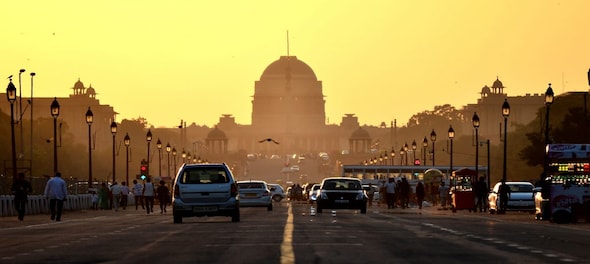
Measures to improve air quality and reduce emissions have never been more urgent. Across India, levels of particulate pollution have increased by 69 percent over the past twenty years. According to the University of Chicago, exposure to air pollution in Delhi is shortening life expectancy of residents by a decade.
Indian cities are beginning to take decisive actions in response to worsening air pollution. Given the enormity of the challenge, Delhi has been at the forefront of testing and instituting both the emergency response measures and long-term interventions that can help reduce the increasing emission concentrations in city’s air.
Delhi released its draft electric vehicle policy with a key objective of improving the local air quality. The draft policy’s bold target of 25 percent battery electric vehicles in new vehicle registrations within the next five years is inspiring and is exemplary of the commitment needed from many cities. If realised, the ambitious target will support a material improvement in Delhi’s air quality, reduce consumption of conventional transport fuels and lower carbon emissions.
EVs combat local air pollution because they have no tailpipe emissions. Studies show that 30-40 percent of particulate emissions in cities are emitted from vehicle tailpipes and up to 65 percent of death and disease from air pollution is caused by pollution spewed by diesel vehicles due in part to the higher exposure from the proximity of the emissions source.
EVs have no tail pipe emissions but they do incur emissions upstream at the power plants given the emissions intensity of India’s power grid. Yet this is no reason to delay or deprioritise EV deployment. For one, relative to fossil fuel-powered vehicles, pollution from power plants is not released in as near of proximity to citizens. Second, as the cost of renewable energy declines, India’s electricity grid is becoming cleaner with lower particulate and greenhouse gas emissions. These declining costs are due in part to abundant solar resources and economies of scale that have helped reduce the levelised cost of energy (LCOE) for solar power in India to about Rs 2720/ megawatt hour, bringing it below the LCOE of coal fired electricity. Renewable energy penetration is buoyed by India’s target of installing 175 gigawatts of renewable energy by 2022. Many vehicles in India operate for well over a decade, and the slow stock turnover of fleets suggests that India cannot wait for a low emission grid to electrify its vehicles. Both transitions must happen in parallel, and can create more value and be more readily achieved when pursued together than separately. For example, smart charging of electric vehicles can help smooth electricity loads and provide valuable flexibility to the grid. Lastly India’s dependence on foreign oil is a source of energy insecurity. India’s oil import dependence has grown to 84 percent, with $111.9 billion spent on oil imports in 2018-19 alone. Greater EV deployment can reduce growing oil import dependence and the savings accrued from reduce oil imports can be redirected to support ‘Make in India’ initiatives in the EV space.
Immediate action and bold targets are required to address what some have described as a ticking time bomb public health emergency. According to a new study, Accelerating Delhi’s Mobility Transition, conducted by the Dialogue and Development Commission of Delhi and Rocky Mountain Institute, if Delhi achieves 25 percent share of EVs in new vehicle registrations by 2024, approximately 5 lakh zero emission vehicles will replace their internal combustion engine counterparts. (For context, 7.6 lakh EVs were sold across all of India in 2018-2019). Over their lifetime, the 5 lakh EVs in Delhi could avoid an estimated 159 tonnes of PM2.5 tailpipe emissions, Rs 6,000 crore in oil and liquid natural gas imports, and 4.8 million tonne of CO2 emissions, equivalent to avoiding CO2 emissions from nearly 1 lakh petrol cars over their lifetime. Notably, nearly 80 percent of the CO2 emissions savings comes from the electrification of two-wheelers and buses.
Many barriers to widespread adoption of EVs exist, including nascent manufacturing capacity, limited product availability, absence of a ubiquitous charging infrastructure network, and limited consumer awareness. Yet the benefit that EVs can bring to society and the environment far outweigh the challenge of overcoming their associated barriers. Delhi’s draft electric vehicle policy is a bold step in the right direction, and with Adhiṭṭhāna (or “strong determination” in the ancient language of Pali) from many stakeholders, cities like Delhi can deliver against commitments to bring about significant improvements in air quality for the benefit and health of citizens. Surely the effort is worth the reward.
Clay Stranger and Akshima Ghate are Principals at Rocky Mountain Institute (RMI) and co-lead RMI’s India practice. The views expressed are their own.
First Published: Sept 19, 2019 6:00 AM IST
Check out our in-depth Market Coverage, Business News & get real-time Stock Market Updates on CNBC-TV18. Also, Watch our channels CNBC-TV18, CNBC Awaaz and CNBC Bajar Live on-the-go!


Prajwal Revanna's father in custody for alleged kidnapping and sexual abuse
May 4, 2024 7:53 PM
Delhi, Indore, Surat and Banswara — why these are the most challenging domains for Congress internally
May 4, 2024 1:53 PM
Congress nominee from Puri Lok Sabha seat withdraws, citing no funds from party
May 4, 2024 12:00 PM
Lok Sabha Polls '24 | Rahul Gandhi in Rae Bareli, why not Amethi
May 4, 2024 9:43 AM

